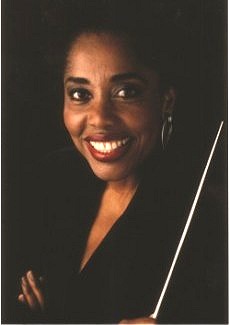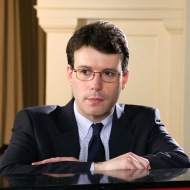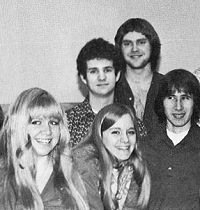 Composer, arts administrator, educator, and now, festival curator, Laura Kaminsky is exactly the type of advocate contemporary music needs to ensure its survival. Until recently a dean at the Conservatory of Music at Purchase College/SUNY (she remains on the faculty), she’s currently Associate Artistic Director at Symphony Space. Since her arrival, Kaminsky has done a great deal to enhance the music programming at the venue.
Composer, arts administrator, educator, and now, festival curator, Laura Kaminsky is exactly the type of advocate contemporary music needs to ensure its survival. Until recently a dean at the Conservatory of Music at Purchase College/SUNY (she remains on the faculty), she’s currently Associate Artistic Director at Symphony Space. Since her arrival, Kaminsky has done a great deal to enhance the music programming at the venue.
“Symphony Space has long been known for its literary events. But in recent years we’ve been hard at work to create an increased role for music in our programming: both in terms of performances and in our educational activities. We’re trying to create a home at Symphony Space for all different kinds of music. I’m particularly pleased with our incorporation of Latin American music into various projects. We are lucky to have both classical composer Tania León and jazz musician Arturo O’Farrill and his Afro-Latin Jazz Orchestra involved in our programs.”
Despite the currently gloomy economic times, she’s helped to organize an ambitious weeklong undertaking spotlighting contemporary music: Composers Now. It all started with a conversation she had with León.
“Tania pointed out that poets and playwrights generally have a much greater public presence than composers. Oftentimes performers become the focus of an event and, apart from their music, we don’t get to know the composers too well. So, we decided to help to organize a festival that gives composers in New York a public face.”
The Composers Now festival has involved dozens of presenters, ensembles, and organizations. And Kaminsky is quick to eschew any notions of single-minded leadership, remarking instead that, “This was very much a team effort. I lived for a time in West Africa and I learned there that it really does take a village. The idea of Composers Now took shape gradually and somewhat informally, beginning as a series of conversations over lunch or a cup of coffee with various area presenters and arts professionals.”
“It seemed as if it was just as we were getting started that the economy took a drastic turn for the worse. For a little while, our informal group of organizers was reluctant to broach the issue, but eventually we started to talk openly about the funding challenges we were all experiencing; about being nervous about the future of our organizations and of this project.”
“I learned something very valuable from those conversations: when people trust each other enough to speak the truth, great things can happen. Once we had had voiced our concerns, we were able to set about finding ways to make Composers Now a reality. By getting creative, we found a solution. The organizers were able to find a week in the ’09-’10 season when we could all commit to programming contemporary music or involving composers in some way.”
Kaminsky and company didn’t look at this as an event exclusively open to composers of concert music. In likeminded spirit to her work at Symphony Space, Composers Now has welcomed a wide range of styles and genres, including Latin American music and jazz. Within the confines of its contemporary classical programming, the composers highlighted have been from a similarly catholic array of styles, ranging from a concert by ‘downtowners’ Bang on a Can to a Composers Portrait of Benet Casablancas at Miller Theatre.
“If all goes well, we want Composers Now to stretch beyond the boundaries of New York City in coming years. I don’t see why this shouldn’t be a nationwide program that raises awareness of composers with events throughout the United States.”
If a village’s worth of arts presenters can achieve what Composers Now 2010 has done in NYC, imagine what arts organizations across the whole country could do?
 Columbia’s own Southern Exposure New Music Series and xMUSE (University of South Carolina’s Experimental Music Studio, directed by Reginald Bain) combine forces once again to present an evening of genre-bending music and technology. The
Columbia’s own Southern Exposure New Music Series and xMUSE (University of South Carolina’s Experimental Music Studio, directed by Reginald Bain) combine forces once again to present an evening of genre-bending music and technology. The  The concert also features Lois V. Vierk‘s Go Guitars for five electric guitars, influenced by traditional Japanese court music, and Reginald Bain‘s Jovian Images, inspired by NASA photographs of planets and performed by renowned saxophone virtuoso Susan Fancher. Admission is free (
The concert also features Lois V. Vierk‘s Go Guitars for five electric guitars, influenced by traditional Japanese court music, and Reginald Bain‘s Jovian Images, inspired by NASA photographs of planets and performed by renowned saxophone virtuoso Susan Fancher. Admission is free (
 Sure, the recession has caused for cutbacks in the arts. But composers are a resilient bunch. This week, New York City will be the site for the first
Sure, the recession has caused for cutbacks in the arts. But composers are a resilient bunch. This week, New York City will be the site for the first 
